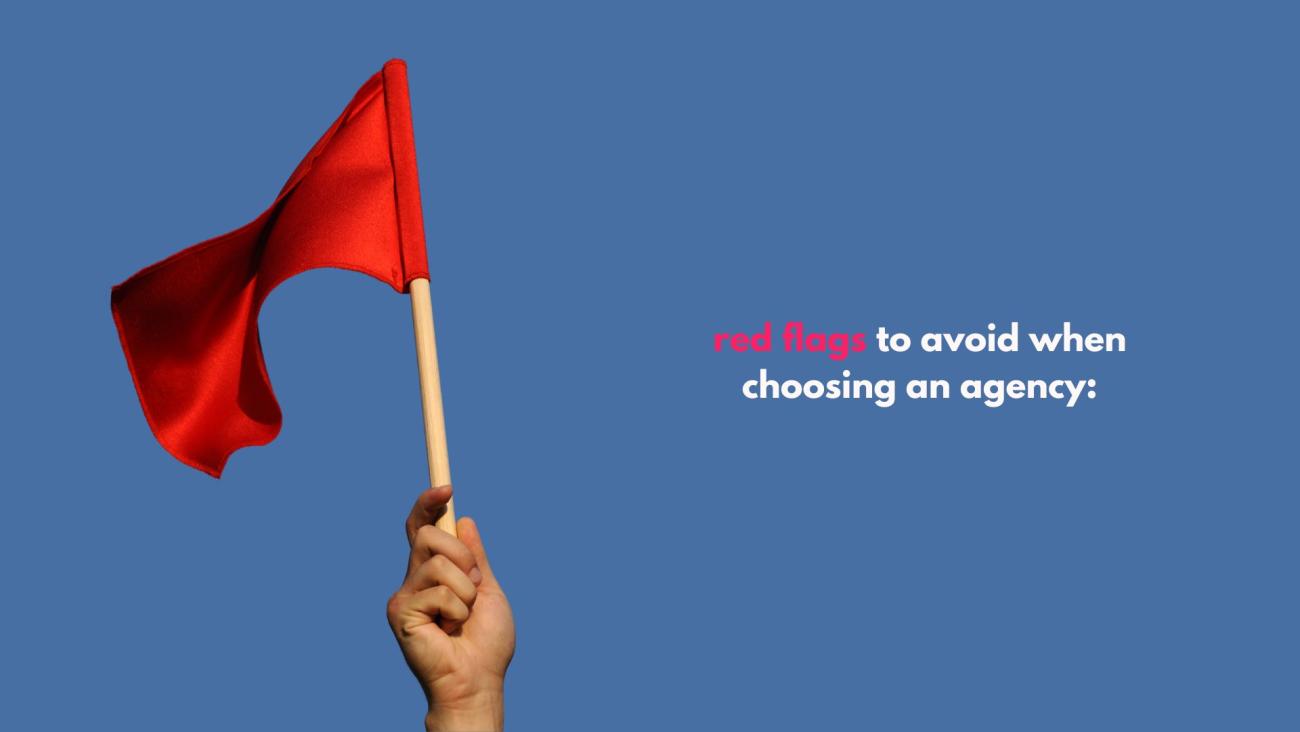
We hate to say it, but over the past few months, we’ve had an influx of clients come to us after some pretty terrible experiences with their previous design agencies. While you might think that’s good news for us (yay, new clients!), we genuinely hate hearing these stories.
Whether you’re investing in a shiny new website or a fresh logo, the process should be exciting, collaborative, and, most importantly, straightforward. Sadly, not everyone out there is delivering on that promise, which gives agencies a bad rep – and that’s frustrating for everyone.
So, we thought we’d pull together a handy list of red flags and green flags to help you spot the good, the bad, and the downright ugly. Because the goal is simple: find an agency you trust, invest in a product that works, and stick with it – no last-minute rescue missions required.
Red Flags vs Green Flags
Red Flag 1: They overuse jargon (to confuse rather than clarify).
If you leave meetings feeling bamboozled by fancy terms like “parallax scrolling,” “modular CSS,” or “bespoke UX flow” (yes, we’ve heard them all), that’s a problem. Some agencies use industry jargon without adding any explanation or context as a smokescreen to mask gaps in their process or to make themselves sound smarter than they are.
Green Flag 1: They break it down for you.
A good agency will explain things in plain English, so you understand what’s happening and feel like an equal partner in the process. No question is too small, and they should encourage you to ask. They know you don’t need to be a web expert – just like they wouldn’t expect to know the ins and outs of your business.
Red Flag 2: They dictate rather than collaborate.
It sounds obvious, but we’ve heard horror stories of agencies steamrolling their clients, insisting on ideas that don’t align with their business goals. It’s your website – not theirs!
Green Flag 2: They listen but keep it real.
A great agency will hear your ideas, understand your vision, and then offer professional advice – especially if they think something won’t work. It’s all about collaboration, not control.
Red Flag 3: They don’t mention maintenance, updates, or aftercare.
Websites aren’t “set and forget.” Without updates, they’ll quickly become buggy, insecure, or out of date. If an agency skips the aftercare chat, that’s a red flag.
Green Flag 3: They offer support and tools.
Whether it’s ongoing maintenance packages or training on how to manage updates yourself, a good agency won’t leave you high and dry. They’ll make sure their product keeps delivering value.
Red Flag 4: Their own website is clunky, outdated, or slow.
It’s simple: if they can’t get their own website right, why would yours be any different?
Green Flag 4: Their site is engaging and functional.
A polished, user-friendly website is the ultimate portfolio piece. It shows they take pride in their work and understand what makes a great digital experience.
Red Flag 5: You don’t have full control of your website.
Some agencies keep clients locked out of the backend and charge for every minor content update. This creates dependency – and bills you shouldn’t have to pay.
Green Flag 5: They empower you to make changes.
Things change (team members, services, contact details) and you should be able to update your website without extra costs. A good agency hands you the keys and shows you how to use them. Your website should be yours, free to host, edit, or move as you please.
Bonus Red Flags to Watch Out For
- Aesthetics > Functionality: If the agency only cares about how your site looks and ignores functionality or business goals, that’s a problem.
- Unnecessary Costs: Beware of unclear retainers or contracts that make you feel stuck. Know exactly what you’re paying for. You deserve a clear breakdown of costs, not vague estimates that balloon later.
- No Portfolio or Testimonials: If they can’t show proof of successful projects or happy clients, proceed with caution.
The Takeaway
The right agency will make you feel confident, supported, and in control every step of the way. It’s not just about a good-looking website; it’s about finding a partner who understands your goals and genuinely wants you to succeed.
So, take your time, ask the tough questions, and don’t ignore those gut feelings. After all, your business deserves nothing less.
Need more advice or want a second opinion? Let’s talk – no jargon, no hard sell, just honest advice.